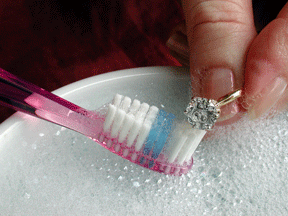In order to choose the perfect diamond for your engagement rings there are Important
factors to consider and understand.
Each diamond is unique and is a phenomenon of time, place and change. And each has specific qualities that establish its value
The four main components to the 4 Characteristic’s of a diamond’s beauty and structure is Cut, Colour, Clarity, and Carat. When looking at a diamond, the eye perceives a balance of its characteristics and components.
DIAMOND COLOUR
The color evaluation of most gem-quality diamonds is based on the absence of color. A pure and structurally perfect diamond has no hue, like a drop of water, and therefore, a higher value. We have GIA’s certified D-to-Z color-grading system, measuring the degree of colorlessness by comparing a stone under controlled lighting and precise viewing conditions to masterstones of established color value.
The GIA color-grading scale is the industry’s most widely accepted grading system. The scale begins with the letter D, representing colorless, and continues, with increasing presence of color, to the letter Z.
Many of these color distinctions are so subtle that they are invisible to the untrained eye; however, these distinctions make a very big difference in diamond quality and price.
DIAMOND CLARITY
Natural diamonds are the result of carbon exposed to remarkable heat and pressure deep in the earth. This process can result in a variety of internal characteristics called ‘inclusions’ and external characteristics called ‘blemishes.’ Evaluating diamond clarity involves determining the number, size, relief, nature, and position of these characteristics, as well as how these affect the overall appearance of the stone. While no diamond is perfectly pure, the closer it comes, the higher its value.
The GIA Clarity Scale has 6 categories, some of which are divided for a total of 11 specific grades. Many inclusions and blemishes are too tiny to be seen by anyone other than a trained diamond grader. To the naked eye, a VS1 and an SI2 diamond may look exactly the same, but these diamonds are quite different in terms of overall quality. This is why expert and accurate assessment of clarity is extremely important.
DIAMOND CARAT
Diamond carat is often misunderstood and refers to a diamond’s weight, not its size. When associating diamond carat sizes, take a diamond’s cut into consideration as well: a high-carat diamond with a poor cut grade may look smaller, often cut deeper, than a diamond with smaller carat weight and a better cut. Use our buying tips, diamond carat size chart, and expert tips to help you choose the best diamond carat weight for you.
DIAMOND CUT
For superior brilliance, choose a diamond with a Cut grade of Very Good or Excellent for round diamonds, and Good or better in fancy shape diamonds. When choosing a diamond in this range, make sure its Symmetry and Polish are Very Good or Excellent, so that the impact of the above average Cut is not obscured.





